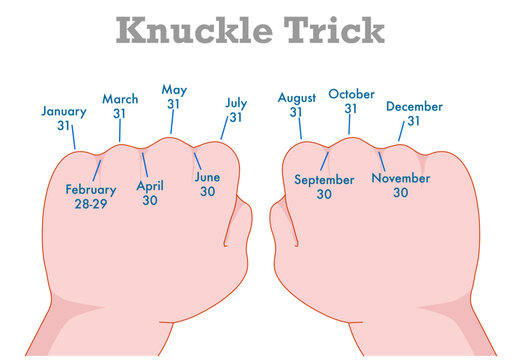
Benjamin Franklin's Transformation
Benjamin Franklin, one of the Founding Fathers of the United States wasn't always the genius you read about in history books. In fact, as a boy, he was considered lazy, dull, and even got the nickname "the idle boy." Teachers thought he was hopeless, and people around him didn't expect much.

From "Idle Boy" to Founding Father
But Franklin didn't stay that way forever. He slowly built habits that sharpened his mind. His biggest weapon? Repetition. He would copy essays over and over, then rewrite them from memory until he could improve them. Over time, that "idle boy" transformed into an inventor, diplomat, writer, and one of the Founding Fathers of the United States—yep, the same guy on your $100 bill.
The Science Behind Repetition
Every time you repeat something, your brain strengthens the synapses (connections between neurons). These connections are reinforced by chemicals like dopamine, which rewards you when you learn successfully. Think of it like turning a rough bush path into a smooth express road—the more you pass through it, the easier it becomes.

Neural Pathway Development
That's why poems, multiplication tables, or even State and capital "Abia–Umuahia, Adamawa–Yola" stick with you after enough recitations. They've moved into your long-term memory through repetition.
But here's the exciting part, far more to repetition, spies and soldiers in the cold war used secret techniques to memorize insane amounts of information—battle codes, drop zones, entire maps—without ever writing them down.
👉 In this blog, I'll show you the same spy-and-soldier memory hacks that can turn you into an A+ student.
5 Spy & Soldier Memory Hacks for A+ Students

Hack #1: Mnemonics – Make It Weird, Make It Stick
📖 Real story: Soldiers memorizing drill instructions used bizarre stories. If their code was B7 at dawn, they might imagine a buzzing bee slamming into box 7 just as the sun rises.
🎓 Your move: Create weird, memorable connections for everything you study.
Biology: To remember the heart's blood flow, imagine blood as a passenger taking a "bus ride"—it starts at the right atrium (bus station), goes to the right ventricle (engine room), moves to the lungs (bus stop to pick up oxygen), then travels to the left atrium (VIP lounge), and finally out through the left ventricle.
Chemistry: To remember the reactivity series (Potassium, Sodium, Calcium…), imagine each element as characters in a drama fighting for "most reactive." Potassium storms in first, while gold chills at the back.
The stranger and more vivid the story, the harder it sticks.

Hack #2: Memory Palace Method
📖 Real story: Spies in wartime had to memorize entire building layouts, escape routes, and contact information without maps. They used the Memory Palace technique—mentally walking through familiar places and "placing" information in specific locations.
🎓 Your move: Use your house, school, or any familiar place as a "memory palace." Walk through it mentally and place facts in different rooms.
For example, studying for a history exam? Place the causes of World War I in your living room, the major battles in your kitchen, and the outcomes in your bedroom. When you need to recall, just take a mental walk through your house.

Hack #3: Story Building
📖 Real story: Intelligence officers linked unrelated information into flowing narratives. Instead of memorizing random facts, they created stories that connected everything.
🎓 Your move: Turn your study material into a story. Link facts, formulas, and concepts into a narrative that flows logically from one point to the next.
Studying the periodic table? Create a story about different "kingdoms" (groups) where elements with similar properties live together, and describe their "personalities" based on their chemical behaviors.

Hack #4: Chunking – Eat the Elephant One Bite at a Time
📖 Real story: Intelligence officers never memorized 20 digits at once. They grouped them—1945, 1989—which made them easier to remember and recall under pressure.
🎓 Your move: Break your notes into smaller, meaningful sets. Instead of trying to memorize 50 vocab words in one go, split them into groups of 5. Study each group, then review the set. Small bites = big progress.

Hack #5: Muscle Memory – Train Till It's Automatic
📖 Real story: Soldiers repeated drills until their bodies reacted instantly, no hesitation. In battle, there's no time to "think"—you just act.
🎓 Your move: Repeat until recall feels automatic. Whether it's formulas, essay outlines, or foreign vocab, practice until it flows out naturally, like when you sing Rema song like Calm down 😅 without looking at lyrics. That's when knowledge moves from "study mode" to "automatic mode."
The 20-Minute Study Session Template
5 minutes: Review previous material (activate your memory palace)
10 minutes: Learn new content using mnemonics and story-building
5 minutes: Practice recall without looking at notes (build muscle memory)
Final Thoughts
Studying isn't about last-minute panic or killing yourself with all-nighters. It's about consistency, repetition, and smart hacks. Create a study schedule, review often, and use these spy-and-soldier memory techniques.
That way, you'll not only study hard, you'll study smart.
Don't just memorize, weaponize your brain.




Join the Discussion